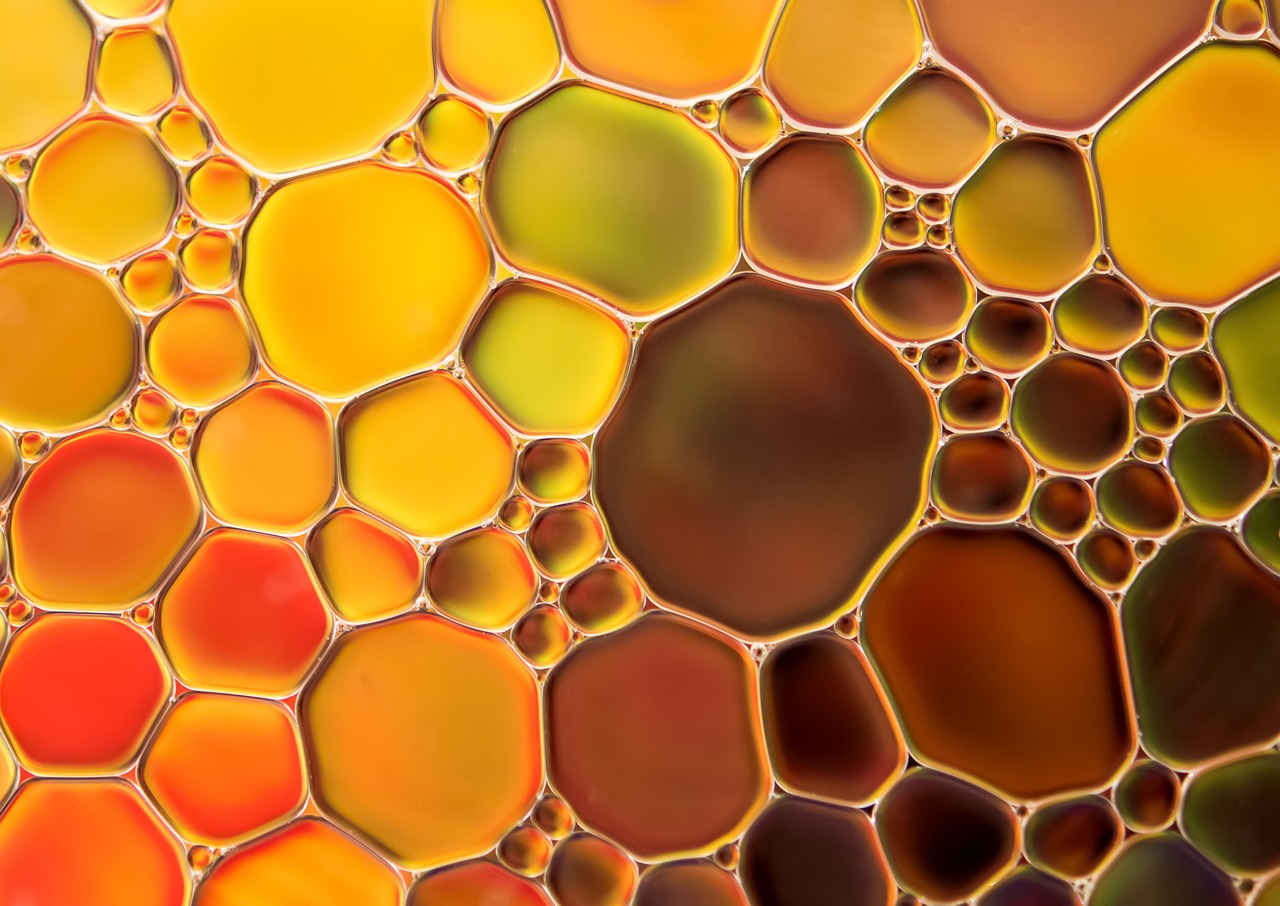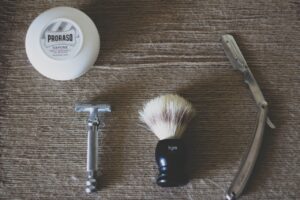Making beard oil at home is a cost-effective and customizable way to care for your beard while promoting growth and health. By following a step-by-step guide, you can create a personalized blend of carrier oils and essential oils tailored to your skin and hair needs. This DIY approach allows you to avoid harsh chemicals often found in commercial products, ensuring a natural and nourishing solution for your beard care routine. Enjoy the process of creating your own beard oil and reap the benefits of a well-groomed and healthy beard!



Easy Beard Oil Recipe for Beginners!
Gather Ingredients
Gather carrier oils like jojoba oil and argan oil for your DIY project. These oils will provide the base for your skincare product. For example, pour 2 tablespoons of jojoba oil and 1 tablespoon of argan oil into a clean glass container.
Don’t forget to add essential oils for a pleasant fragrance. Choose scents like lavender or cedarwood. Add a few drops of your chosen essential oil to the carrier oils. For instance, add 5 drops of lavender essential oil for a calming scent. Mix the oils together gently using a glass stirrer or a clean spoon to blend the fragrances.



Prepare Workstation
Set up a clean workspace by wiping down surfaces with disinfectant. Remove any unnecessary items from your workstation to create a clutter-free environment.
Sterilize containers for storage by washing them with hot, soapy water and rinsing thoroughly. Alternatively, you can use a dishwasher on a high-temperature setting.
Have measuring tools ready by gathering measuring cups, spoons, and a kitchen scale if needed. Ensure they are clean and easily accessible for when you start working on your tasks.
Mix Carrier Oils
Combine the carrier oils in a glass container in the desired ratios. Start by selecting your carrier oils – for instance, mix 3 tablespoons of sweet almond oil with 1 tablespoon of jojoba oil for a nourishing blend. Pour the carrier oils into the glass container.
Next, consider adding essential oils. For example, mix 9 drops of lavender essential oil with 3 drops of peppermint essential oil. Gently pour the essential oils into the glass container with the carrier oils.
Use a stirrer or small whisk to mix the oils thoroughly. Make sure the oils are well combined before use. Remember, a 3:1 ratio of carrier to essential oils is a good starting point for most blends.
Add Essential Oils
Carefully add essential oils for scent and additional benefits; use a dropper to control the amount. Start by choosing the essential oil you desire and ensure it complements the purpose of your product. Hold a dropper over your mixture and gently squeeze to release the oil drop by drop. Be cautious not to add too much at once; remember, a little goes a long way with essential oils. Take your time and allow the aroma to blend evenly throughout your product. Experiment with different oils and amounts to find the perfect balance for your desired scent and benefits.
Blend Thoroughly
- Shake or stir the container of oils vigorously to blend them thoroughly.
- Make sure the oils are mixed well to ensure an even distribution of scents and properties.
- Continue stirring or shaking until the oils are fully combined.
- Take care to blend the oils properly to maximize their effectiveness.
- Ensure that the scents and properties are evenly distributed by mixing the oils thoroughly.
Test and Adjust
Test a small amount of the oil on your skin. Apply a drop of the essential oil to a small patch of skin, like your inner forearm. Check for any allergic reactions or skin sensitivity. Observe the area for at least 24 hours. If there is no irritation, proceed. If you experience redness, itching, or other negative reactions, stop use immediately and wash the area with mild soap and water.
Adjust essential oil amounts if needed. Start with a lower concentration by diluting the essential oil with a carrier oil. Mix a small amount of the diluted oil and apply it to your skin. Observe for any adverse effects. Increase or decrease the essential oil amount based on your skin’s reaction until you find a suitable concentration that works for you.
Store and Apply
Store the beard oil in a dark glass bottle to shield it from light exposure, which can degrade its quality over time. The dark glass helps preserve the oil’s beneficial properties. When storing the oil, make sure to seal the bottle tightly to prevent air from entering and causing oxidation.
Apply a few drops of the beard oil daily to both the beard and skin to maintain their health and condition. Rub the oil between your palms to warm it up, then evenly distribute it through your beard and onto the skin beneath. Massage gently to ensure the oil reaches the roots of the hair and the skin for optimal conditioning. Regular application will help keep your beard soft, nourished, and looking its best.
Final thoughts and tips
Making beard oil at home is a fun and personalized way to care for your beard. By crafting your own blend, you can create a product that suits your needs and preferences. Enjoy the process of mixing and experimenting with different oils to find the perfect combination for a healthy and well-groomed beard.
Essential Supplies List

DIY Beard Oil Tips
Application Tips for Beard Oils and Balms
- Start with a clean and dry beard: Make sure to wash and completely dry your beard before applying beard oil or balm
- Apply a small amount: Begin with a small amount of beard oil or balm and rub it between your palms to evenly distribute it before applying to your beard
- Massage into your beard and skin: Gently massage the oil or balm into your beard, making sure to cover all areas and also reaching the skin underneath
- Comb or brush your beard: Use a beard comb or brush to help distribute the oil or balm evenly throughout your beard and to style it as desired
- Use regularly: For best results, use beard oil or balm regularly as part of your grooming routine to keep your beard healthy, soft, and well-conditioned
FAQs
The main difference is the presence of fragrance. Scented products are infused with essential oils or artificial fragrances to provide a pleasant aroma, while unscented products do not contain any added fragrances. The choice between scented and unscented products is subjective and depends on personal preference. Scented products offer a fragrance that can enhance the grooming experience, while unscented products are preferred by those who are sensitive to fragrances or simply prefer a neutral product.
Beard oils and balms should be stored in a cool, dry place away from direct sunlight to ensure their effectiveness. Exposure to heat and light can degrade the quality of the oils and balms, reducing their effectiveness in moisturizing and nourishing the beard and skin. It is recommended to store them in a dark, airtight container to preserve their quality over time.
Beard oils and balms help in maintaining a healthy beard by providing essential moisture and nourishment to the facial hair and the underlying skin. They contain natural ingredients such as carrier oils, essential oils, and butters that help to soften the beard, reduce itchiness, and prevent dryness. These products also help in promoting a healthy environment for beard growth, preventing split ends, and making the beard more manageable. Overall, beard oils and balms play a crucial role in keeping the beard looking and feeling healthy.






Tip for storing homemade beard oil: Make sure to keep it in a cool, dark place to prevent the oils from going rancid quickly. Also, using dark-colored glass bottles can help preserve the oil better by protecting it from light exposure.
Great tip! Storing the beard oil properly is key to maintaining its quality. Dark glass bottles are definitely the way to go to ensure the oil stays fresh for a longer period. Thanks for sharing!
Can you recommend specific carrier oils and essential oils that work best for coarse and curly beards? I want to make sure I’m using the right ingredients for my beard type.
Hi there! For coarse and curly beards, I recommend using argan oil, jojoba oil, or sweet almond oil as carrier oils. For essential oils, cedarwood, sandalwood, or peppermint are great choices. They help with conditioning and promoting hair growth.
I had trouble blending the oils properly, and my beard oil turned out uneven. Any tips on how to blend them thoroughly without causing separation?
I followed this guide and made my own beard oil at home for the first time, and I’m amazed at how great it turned out! My beard feels softer and looks healthier. Thank you for the easy-to-follow steps!